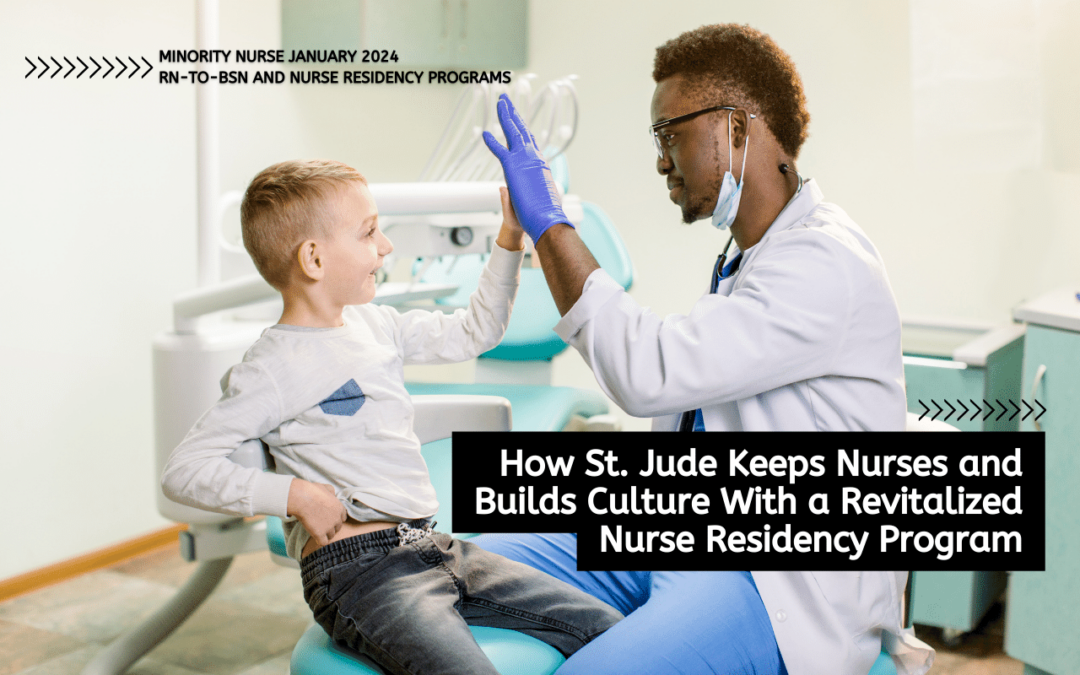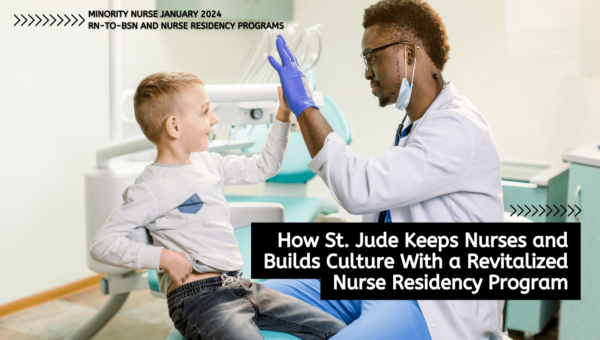
How St. Jude Keeps Nurses and Builds Culture With a Revitalized Nurse Residency Program
Recent nursing school graduates account for the highest number of registered nurses available for recruitment in U.S. hospitals. Yet, they leave the profession at a higher rate than long-term nurses. Many become stressed when they find themselves unprepared for the realities of clinical practice. Many experience additional stresses if they have relocated to a city without friends, are unfamiliar with the local culture, and need more time to explore their new surroundings.
How a Residency Program Can Help Early Career Nurses
Before the pandemic, St. Jude Children’s Research Hospital had low nurse turnover and a large pool of applicants from which to choose
. Since then, despite the hospital’s efforts, nurses have been experiencing the same fatigue phenomenon seen at hospitals nationwide.As a result, St. Jude invited its nurses to reimagine and reenergize the institution’s Nurse Residency Program (NRP), created in 2012 and focused on inpatient pediatric oncology. During its review, a planning team identified barriers to recruiting and retaining new graduate nurses.
The redesigned program, accredited as a practice transition program by the American Nurses Credentialing Center (ANCC), now onboards each resident into a generic graduate nurse role. This shortens delays in licensure, kickstarts their professional development, and helps the new nurses build friendships within their cohort from day one. Following onboarding, the residents participate in a week of NCLEX study preparations, which has resulted in pass rates well above state and national benchmarks.
Clinical Rotations
To ensure that residents find specialties that appeal to them, St. Jude created clinical rotations similar to those employed in medical school. Residents spend 6 weeks in clinical rotations, spending shifts in 12 to 40 patient care areas: inpatient, outpatient, surgical services, and ICU. These rotations introduce the nurse residents to the continuum of care at St. Jude, build relationships across the organization, and allow residents to see all the potential nursing opportunities.
After the clinical rotations, the new nurses are matched to a home unit using the National Resident Matching Program’s algorithm. The entire St. Jude nursing family meets the new team members on Match Day.
Afterward, nurse residents receive a unit-based orientation and complete a 12-month-long curriculum that brings the cohort together for monthly sessions of didactic lessons, simulation, and various activities to assist with transitioning from novice to competent nurse.
Growth of the Whole Nurse
Traditional simulations have been replaced with immersive experiences. NRP leaders built a curriculum that provides growth for the whole nurse, even outside work. Nurse residents learn patient assessment and emergency response skills while consulting with personal finance and wellness experts.
For many new nurses, the workplace isn’t a problem. Nurses relocating from other cities experience a disconnection from unfamiliar local cultures and social life. With a sizable percentage of out-of-state nurses joining St. Jude, the NRP team organizes regular social outings to tour Memphis’ cultural and entertainment venues. The new nurses also participate in community service projects to “pay it forward” and contribute to positive growth within their new environments.
Program Results
The revised program has successfully onboarded three groups of new nurses, bringing more than 60 nurses to the bedside with 100% retention of every cohort after one year, far exceeding the national retention benchmark. Changes to the hiring process allowed for earlier onboarding of high-quality candidates and an increase in cohort size, filling over 90% of RN vacancies with each cycle and allowing expansion into the surgical and ambulatory nursing divisions.
But the support for its residents continues. After the nurse residents graduate from the program, they transition into a mentor program where they obtain support from a senior nurse to help guide them through their second year of professional practice.
A welcome benefit of the revised NRP is the increased diversity within each cohort, bringing critical multilingual skills and new cultural perspectives to St. Jude.
This highly skilled, diverse, and, importantly, satisfied nursing workforce is vital to the St. Jude mission of providing top-flight clinical care while advancing cures and means of prevention for pediatric catastrophic diseases through research and treatment.
Read the January issue of Minority Nurse focusing on RN-to-BSN and Nurse Residency Programs here.
Sign up now to get your free digital subscription to Minority Nurse.


